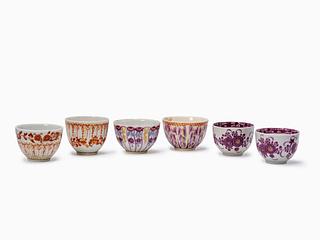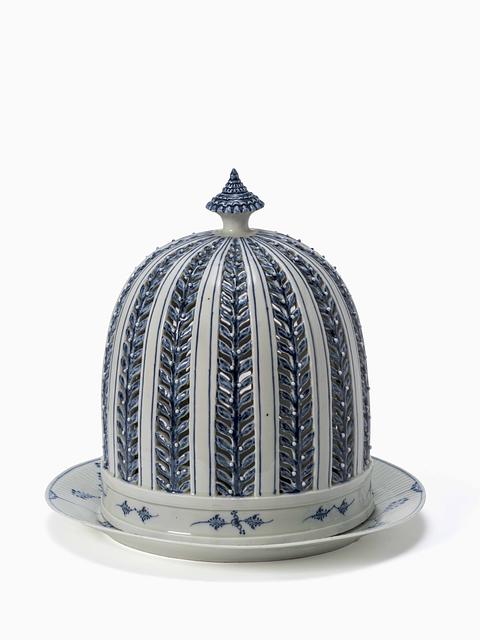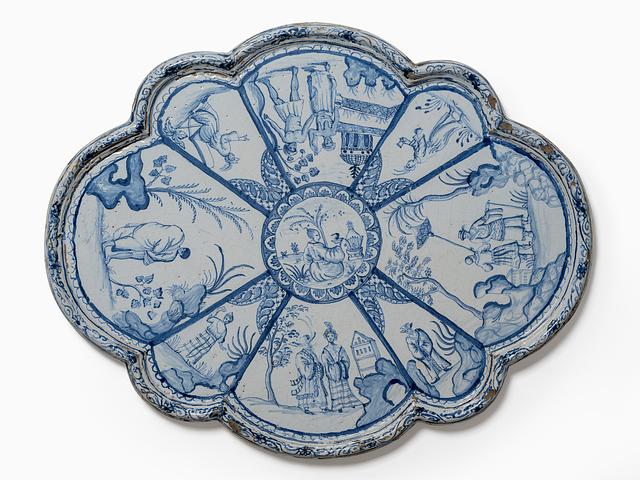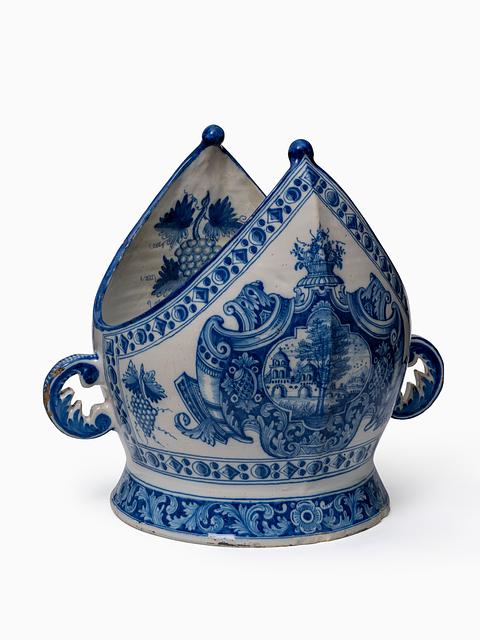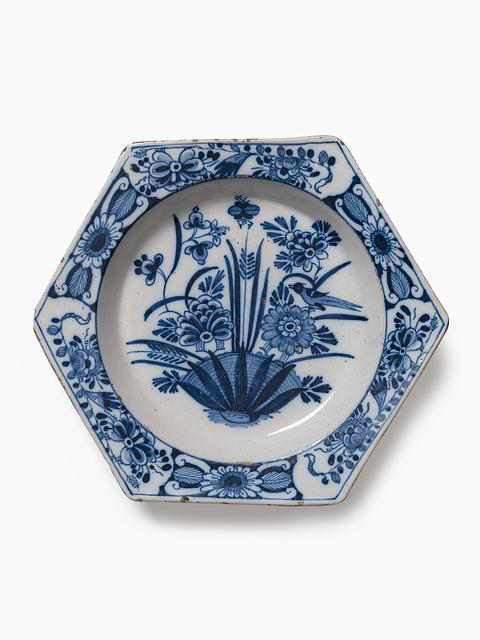Six Turks’ Cups of porcelain
Royal Copenhagen Porcelain Manufactory, late 18th century
H: 4.3–5 cm
Inventory number KP 4, KP 7a, KP 7b, KP 8, KP 29 & KP 30
At the end of the eighteenth century, the Royal Copenhagen Porcelain Manufactory began a production of small, hemispherical cups with no handles and no accompanying saucers. These pieces went by the name “Turks’ Cups”.1 The inspiration came from the porcelain manufactory in Meissen, which had produced so-called Türkenkoppchen or Türkenbecher since the early 1720s. Other factories in Germany also produced similar cups intended to hold dark, intense coffee.
The six Turks’ Cups in The David Collection demonstrate the variety found in their decoration. The cups were most often decorated with stylised flowers and/or leaves, for example in the so-called ‘Indian painting’ (KP 5 a–b). The palette was variegated, but limited to iron red, purple, blue and gold. Some Turks’ Cups have a flower at the bottom of the cup.
Unfortunately, very little is known about the Turks’ Cups from the Royal Copenhagen Porcelain Manufactory. In all likelihood, they hoped for an export success like the one in Meissen where the factory exported their Türkenbecher to the Ottoman Empire. However, there is much to suggest that this remained just a dream in Denmark: despite a large production of Turks’ Cups, no major sales have been documented – neither internationally nor in Denmark.2
The six Turks’ Cups in The David Collection demonstrate the variety found in their decoration. The cups were most often decorated with stylised flowers and/or leaves, for example in the so-called ‘Indian painting’ (KP 5 a–b). The palette was variegated, but limited to iron red, purple, blue and gold. Some Turks’ Cups have a flower at the bottom of the cup.
Unfortunately, very little is known about the Turks’ Cups from the Royal Copenhagen Porcelain Manufactory. In all likelihood, they hoped for an export success like the one in Meissen where the factory exported their Türkenbecher to the Ottoman Empire. However, there is much to suggest that this remained just a dream in Denmark: despite a large production of Turks’ Cups, no major sales have been documented – neither internationally nor in Denmark.2
Published in
Published in
Bredo L. Grandjean: Kongelig Dansk Porcelain: 1775-1884, København 1962, pp. 27, 251–252;
Dansk kunst og kunsthåndværk, Davids Samling, København 1972, pp. 17, 19;
Verner Jul Andersen: Dansk kunst og kunsthåndværk, Davids Samling, København 1983, cat. 4–8, p. 16;
Lauritz G. Dorenfeldt: Kongeligt porcelæn: brogetmalet porcelæn fra Den Kongelige Porcelainsfabrik 1775-1810, København 2016, pp. 83–84;
Dansk kunst og kunsthåndværk, Davids Samling, København 1972, pp. 17, 19;
Verner Jul Andersen: Dansk kunst og kunsthåndværk, Davids Samling, København 1983, cat. 4–8, p. 16;
Lauritz G. Dorenfeldt: Kongeligt porcelæn: brogetmalet porcelæn fra Den Kongelige Porcelainsfabrik 1775-1810, København 2016, pp. 83–84;
Footnotes
Footnotes
1.
In 1784, an inventory taken of the factory’s stock lists 6,000 polychrome, 123 undecorated and 579 blue Turks’ Cups. In 1800, the stock count comes to 5,114 Turks’ Cups. Bredo L. Grandjean: Kongelig Dansk Porcelain: 1775-1884, Copenhagen 1962, p. 251.
2.
Exactly when this production began is not known for certain. According to the lists of firings, no Turks’ Cups were made before 1779. See Bredo L. Grandjean: Kongelig Dansk Porcelain: 1775-1884, Copenhagen 1962, p. 251.
